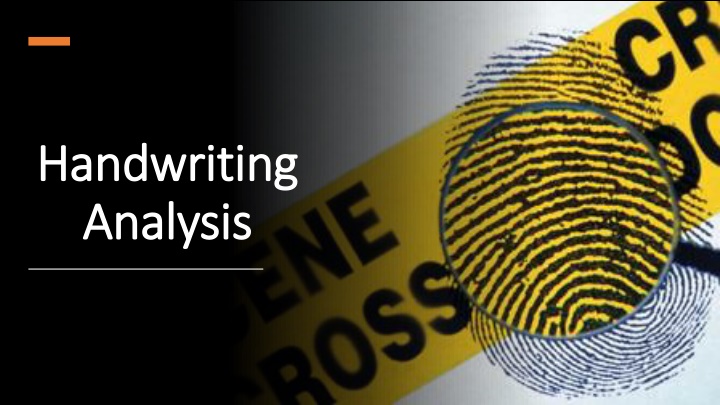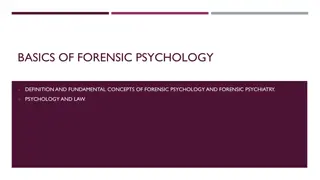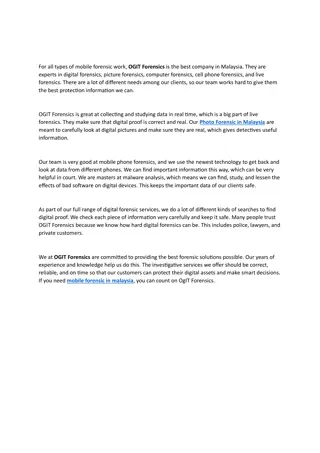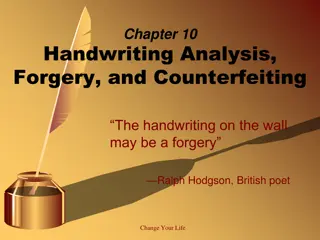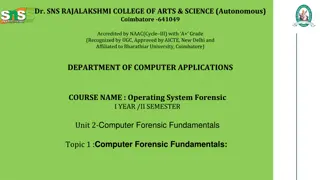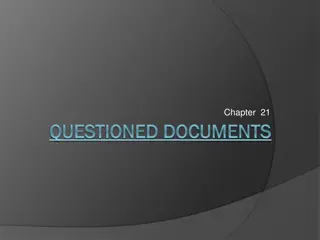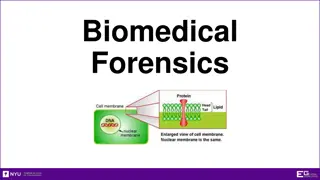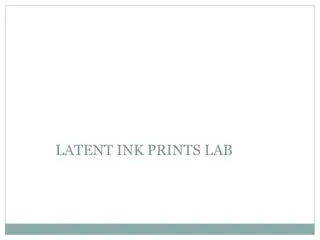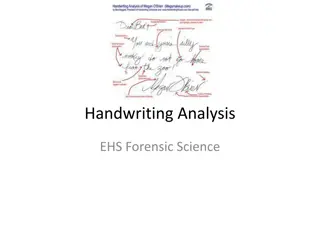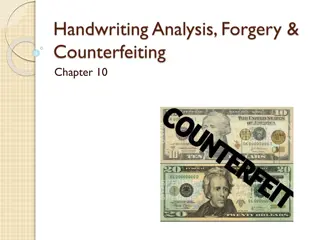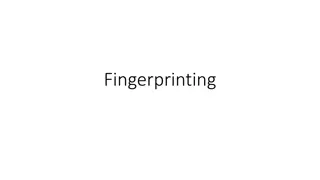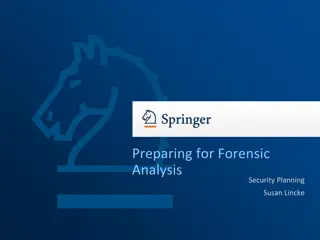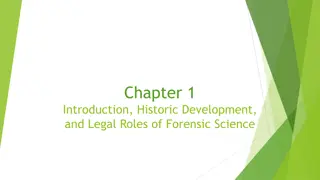Handwriting Analysis in Forensic Science
Handwriting analysis plays a crucial role in forensic science, especially in detecting forgery. Experts compare handwriting samples to determine authenticity, relying on distinct characteristics such as line quality, spacing, and pen pressure. Utilizing standards for comparison, they assess unique traits in individual handwriting to establish authorship in legal cases.
Download Presentation

Please find below an Image/Link to download the presentation.
The content on the website is provided AS IS for your information and personal use only. It may not be sold, licensed, or shared on other websites without obtaining consent from the author.If you encounter any issues during the download, it is possible that the publisher has removed the file from their server.
You are allowed to download the files provided on this website for personal or commercial use, subject to the condition that they are used lawfully. All files are the property of their respective owners.
The content on the website is provided AS IS for your information and personal use only. It may not be sold, licensed, or shared on other websites without obtaining consent from the author.
E N D
Presentation Transcript
Handwriting Handwriting Analysis Analysis
Handwriting analysis can be used in forensic science to establish whether or not forgery has been committed. Forgery is the illegal act of reproducing someone s signature without his or her permission. Forgery is most commonly encountered when an individual illegally signs another person s name to a check to steal money from that person s checking account. Experts in handwriting, who are also called document examiners, often testify in court about the author of a signature.
Handwriting comparison is the most frequently requested type of document analysis. As people mature, they develop personal habits that contribute to unique characteristics in their handwriting. By adulthood, a person s handwriting is as exclusive to them as their speech. Even when a person tries to disguise his or her handwriting, some of that person s own characteristics can still be seen. When experts in handwriting carefully compare two documents, they can usually tell whether the documents were written by the same person.
Compare It with the Standard: When the handwriting in a document is in question, the document examiner asks for a handwriting sample with which to compare the questioned document. This sample is the standard for comparison. A standard is usually obtained from two sources: requested writing and collected writing. The collected writing comes from writing done before the investigation began. It may be signatures on canceled checks or written applications for jobs. To provide a requested writing, an individual writes a dictated text using the same type of paper and ink that was used in the document in question.
Twelve Basic Characteristics of Comparing Handwriting: Line quality Spacing of words & letters Lifting pen Connecting strokes Strokes to begin & end Unusual letter formation
Ratio of height, width & size of letters Pen pressure Slant Baseline habits Fancy writing habits Placement of diacritics (crossing t s and dotting i s)
